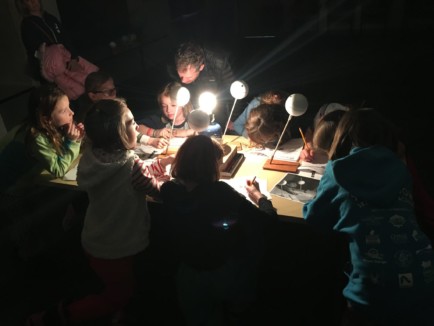Expedition Express: Bills and Gills – How complete ecosystems work together to survive and thrive
How is all life supported? What does the sun do to help create systems of life, and what are the systems in which animals and plants have adapted that support ecosystems’ health? Students participate in two case studies in this expedition. The first, titled “Forces of Nature” examines growth and development of organisms, interdependent relationships in ecosystems, cycles of matter and energy transfer, ecosystem dynamics, and form and pattern in nature. Students will design Google Slides presentations on biomes of the earth, learn to nature journal from expert John Muir Laws, create diagrams of energy transfer and cycling, write an informational piece on ecosystem dynamics. Our second case study, titled “ Whooo’s Out There? From Molecules to Organisms- Structures and Processes,” Students will focus on flora and fauna of the Sierra Nevada, with a specific focus on the Great Horned Owl and Lahontan Cutthroat Trout. Students continue drafts of their owl and trout drawings, and participate in service learning projects that will later be revealed (hint: we will work on beautifying our campus! Think interpretive trail!). Working as Ornithologists and Ichthyologists, students will examine habitats, traits, life cycles, conservation, and relevance of local bird and fish species. Students will dissect owl pellets, learn about dichotomous keys and identification of macroinvertebrates in local streams, and write opinion and narrative pieces regarding these topics.
Questions to Ask Your Child:
How do animals’ body structures help them grow, survive, and reproduce?
How are all the parts of an ecosystem dependent on one another?
What is an ecosystem?
What kinds of energy exist in an ecosystem?
Who is John Muir Laws? What does he do for a living?
What are some of the key components to nature sketching
What is an Ornothologist? An Ickthyologist?
What are concepts in nature mapping?
Who is Rachel Carson? What did she do in the world of conservation?
Crew News
5th Math: Students use units of computer memory—bytes, kilobytes, megabytes, and gigabytes—to explore conversions within a given system of measurement, and then extend the strategies they develop to making metric conversions. Students also continue their work adding and subtracting decimals in a vertical format and solving story problems that involve decimal amounts. In Unit 4, students return to the study of multiplication and division strategies, including the standard multiplication algorithm. In the first two modules, students investigate a number of strategies that capitalize on their estimation and mental math skills and help them continue to develop strong number sense. These include strategies that leverage the relationship between multiplication and division; the fact that 5 is half of 10; the relationships between fractions, decimals, and whole numbers; and the process of doubling and halving. In Module 3, the teacher formally introduces the standard multiplication algorithm after reviewing the area model and partial products. Module 4 reinforces the connection between multiplication and division, using the area model and ratio tables to help students develop a degree of comfort with long division.
4th Math: The 4th graders are finishing up the unit on fractions and decimals. Look for the assessment next week and test coming home to sign the following week. The next unit will focus on place value to 1,000,000, multi-digit addition/subtraction strategies, rounding, and place value to the millions. Students will use what they know about place value to investigate strategies as well as use standard algorithms. This is a true number sense unit and finding the best strategy to fluently add and subtract numbers.
*Make sure to sign planners every night. Front Row practice will be applauded at home and will be used when applicable at school.
ELA: In book club, students are reading various books related to our new expedition. We have had a fun time learning which new award-winning contenders will fit into our studies! Students fill out a daily reading log, follow a specific focus of study for the week, and then turn in their work on Fridays. They plan out their week and discuss topics as well on Fridays. Our Writer’s Workshop block is focusing on Non Fiction Narratives and Non Fiction Teaching Books (5th Grade). Specifically studying reading and writing for information, students practice summarizing, comparing and contrasting, and other non fiction text styles. We also complete on demand writing assignments after learning and exploring different text styles.
Character: The Brisbin Crew and Akers Crews have begun learning about our current design principle “The Having of Wonderful Ideas,” and recently completed an amazing Electric Inventors expedition with teacher Brooke Landis (thanks, Brooke!). Students developed incredible inventions that they cannot wait to show you at Celebration of Learning. Ask them about it their games! Students also continue to work together in games day on Thursdays, and collaboration during Morning Meeting and Debrief sessions. Each Crew is also reading text based on Scientists (Rachel Carson!) who, with their amazing and wonderful ideas, helped save the world in the name of conservation.

